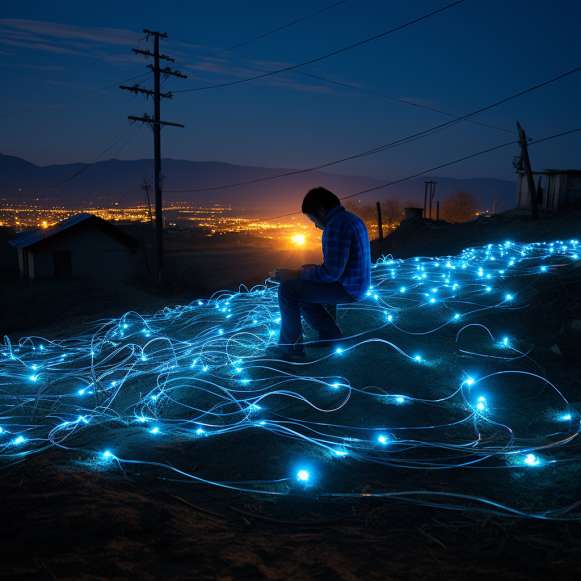Coyote encounters: Keep the peace by keeping your distance

You’re out walking your dog first thing in the morning, as is customary. But as you walk up the sidewalk, you notice a furry brown shape ahead of you. You tighten the leash as you are concerned about an aggressive stray dog. Then you get a better look at it. The animal is a coyote.
If you spend any time on social media, whether it’s your neighborhood’s Facebook page or NextDoor.com, you’ll notice that coyote sightings have risen dramatically in recent years. Not only that, but many claim that the canids are multiplying by the day, and that some areas are being overrun, threatening public safety.
Is this, however, the case?
“No,” Seth Riley, chief wildlife ecologist for the Santa Monica Mountains National Recreation Area, said, adding that he’s been hearing “that exact same thing” for the last 23 years.
Riley’s National Park Service colleague, wildlife ecologist Jeffrey Brown, believes the increase is due to the fact that so many people now have doorbell cameras, which detect wildlife visitors at any time of day or night.
“It just seems they’re noticing the wildlife more because they’re able to see them,” Brown went on to say.
The California Department of Fish and Game estimates that there are between 250,000 and 750,000 coyotes in the state, which is a wide range, but it is possible to get more precise in certain areas.
The coyote population in San Francisco was nearly wiped out in the last century due to trapping, removal, or poisoning. A coyote was spotted in the Presidio 30 years after that poison, Compound 1080, was banned in 1972. According to Janet Kessler, an amateur naturalist known as San Francisco’s “Coyote Lady,” who has studied the animals for the last two decades and posts her findings at coyoteyipps.com, the city now has about 100 coyotes divided into 17 to 18 family groupings.
Coyotes can also be seen strolling the streets and trails of suburbia. They normally avoid humans, but there have been a few high-profile exceptions in recent years. Between July 2020 and February 2021, an aggressive coyote attacked five people, including two children, in Lafayette and Moraga before being captured, DNA tested to ensure it was the right animal, and euthanized. Meanwhile, a coyote in Golden Gate Park had to be euthanized after lunging at small children in broad daylight in 2021.
Authorities said that in both cases, the coyotes appeared to have lost their fear of humans because they had been fed. San Francisco Animal Care and Control officials even released photos of a woman feeding meat to coyotes from a plate in Bernal Heights Park in 2021. That same year, in the Oakland Hills, neighbors banded together to prevent a resident from leaving dog food and water out for coyotes.
It may seem obvious, but not feeding coyotes is extremely important, according to Kessler, Riley, and Brown. However, you may be unintentionally feeding them by leaving your pet’s food and water bowls in the back yard or by failing to pick up fallen fruit or seed from bird feeders. The latter attracts rodents, which are a favorite snack of coyotes.
We may want our backyards to be a haven for birds and other wildlife, but inviting coyotes in is never a good idea, especially if you have pets or small children — or neighbors who do. Even with these precautions, keeping coyotes out of your yard can be difficult.
Hazing coyotes — yelling at them, throwing things at them, chasing them away — works for a while. Riley warned, “Coyotes are extremely intelligent.” You might require a longer-term solution.
“A six-foot fence with rollers is supposed to keep them out,” he said. “However, this necessitates that there be no gaps at gateways and that the fence be buried at least a foot underground to prevent coyotes from digging under the fence.” The most important practice of all is to always supervise your pet when you are outside.”
Which brings us back to the walk you took with your dog. When you spot a coyote, it saunters closer instead of fleeing. What are you going to do?
Avoid all forms of contact. Keep your dog on a leash so it does not chase the coyote. Pick up the smaller dog, Kessler advised. Then, calmly and assertively walk away, keeping an eye on the coyote. Running away from a coyote will only enrage it. If the coyote follows you, keep moving while remaining calm. Coyotes defend their territories and may simply be “escorting” you away.
A coyote lunging at you or biting you is still unusual, but canid aggression varies depending on the season. When coyotes are breeding, they guard their dens. Brown advises being cautious on nature trails between March and September. In fact, the San Francisco Presidio typically closes some trails to dog walkers during pupping season to reduce the possibility of conflict.
Above all, don’t let a bad experience turn you off to animals, because we’re more alike than you think.
“Our coyotes live much richer lives than most people realize,” Kessler writes on her website. “Their lives are full of emotion — really the same emotions we experience — and full of family life — the amazingly similar family life we enjoy.”






